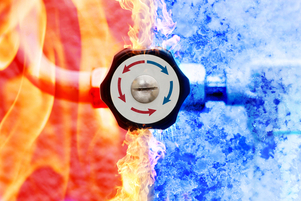
Catanzaro has recently came up with the acronym, METH, as an alternative to RICE. METH stands for; Movement, Elevation, Traction and heat. The key with this new approach is the movement part. With injuries we need to get the injured area moving again. Traction is also going to help with this part. It is widely known that bed rest is no longer the right thing to do for most causes of back pain, so why should other parts of the body be different?
Elevation is the same in both approaches, it helps assist with moving blood from the limb to the heart. Elevating the injured part utilizes gravity to assist with the blood flow. This helps in flushing out the swelling/inflammation byproducts out of the area.
Heat helps with blood circulation in the area, therefore, reducing discomfort and tension. Short bursts are more effective than longer term heat application.
Should you give up on RICE and move to METH when you injure yourself?
My thoughts are that you need to use approaches of both methods. It is not right to just completely stop using ice. Sometimes it is needed. With an acute injury, you need to reduce pain and swelling. Ice, compression and elevation could help achieve this. Just make sure not to ice for too long as it can actually make things worse. You also need to get that injured area moving to help with blood flow, circulation and healing. Heat application will also help achieve this. This is where the METH approach is ideal.
As with most injuries, it is always best to get a professional opinion as to what the problem is. Doing the wrong thing could slow the healing process and cause problems in the future. If you have a clear idea on what the problem is, you can then choose the best treatment approach.
How long should I use ice and heat for?
After you decide whether or not to use ice or heat, the next question is, how long should I use them for? This is an important question as each of them should be used for different periods of time. Here is what I have learnt over the years:
- ICE: If you are wanting to use ice, short bursts work better. Apply ice for 10minutes then take it off and let the area warm up again before re-applying the ice if needed.
- HEAT: Like ice, heat also works better with shorter bursts. Apply the heat for 20minutes then leave off for 40minutes before re-applying. You will get better physiological response doing it this way than leaving it on for an hour or so.
- A general rule of thumb to go by: Use ice as described above for the first 24 hours or less if needed. After that time, switch to heat.
- If problems persist, please seek professional advice.
There are lots of ways to apply ice and heat. Keep an eye out for my next blog posts where I will look at the best ways of applying them. Hopefully you have found this post interesting and informative. If you have please share it so others can benefit from the information.
References:
- http://fitforlifewellnessclinic.com/rice-versus-meth-a-new-approach-for-healing-soft-tissue-injuries/
- http://www.macleans.ca/society/the-end-of-the-ice-age/
- http://www.healthsnap.ca/blog/meth-new-rice-ice-rest-move-treat-injury-sprain.html#.VsUkavl96Uk



 RSS Feed
RSS Feed


